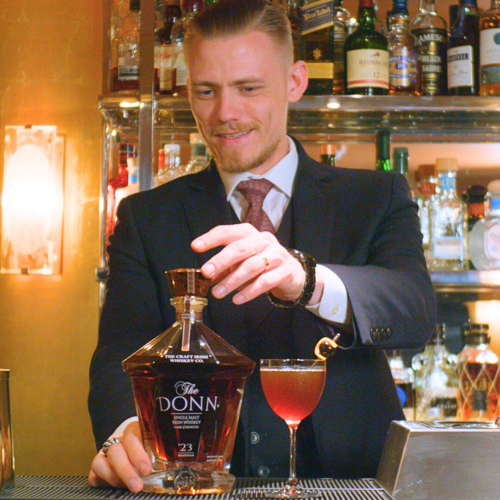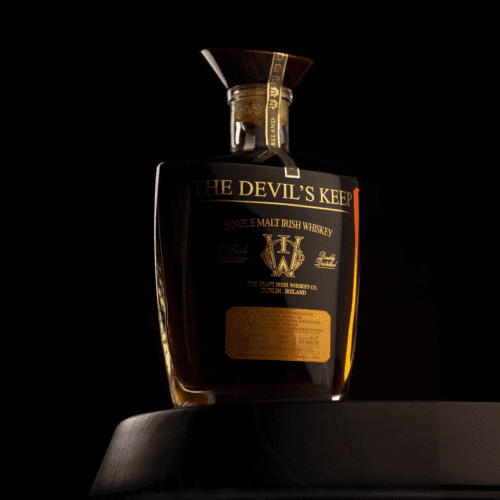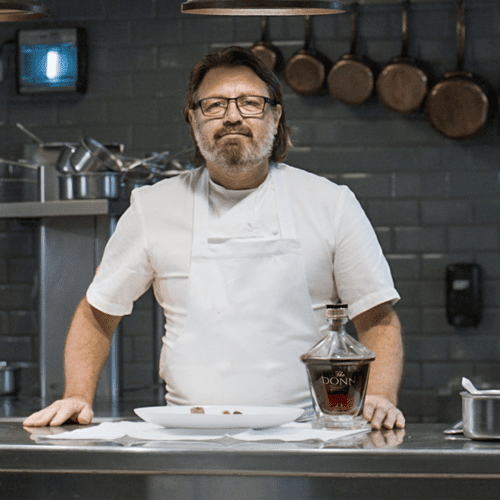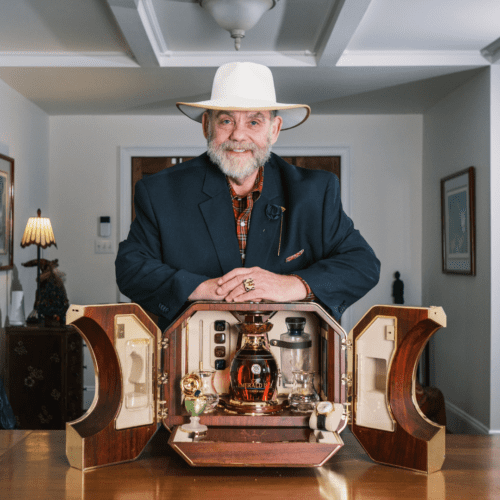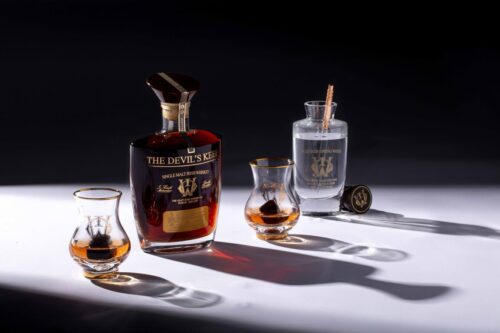Whiskey drinkers often like to talk about the “Angel’s Share”; the portion of liquid which evaporates as ageing whiskey sits in the warehouse. In Ireland, this portion of liquid lost to the rafters can equal more than 3% of volume per year! But there’s something special the spirit is taking in as that whiskey barrel lightens its load. Namely, we’re getting a heavier concentration of flavour.
The practical way to make Whiskey…
Bourbon casks are particularly suitable for whiskey maturation because they are constructed out of sturdy American oak, and are rich in those vanilla and caramel-laden wood sugars that provide our favourite whiskeys with so much character. American whiskeys, as a result, will continue to provide the go-to oak whiskey cask wood for the lion’s share of barrel maturation. It’s owed to practicality as much as it is to anything else: American whiskey such as bourbon and rye can only use fresh barrels. After they’re used once, they have to be moved out to age whiskeys in other parts of the world.
The perfect way to make whiskey…
But forget practicality. Despite all we’ve learned about the technical process of barrel ageing in recent years, the maturation of whiskey remains as much an art as it is a science. Whiskey drinkers have grown accustomed to all sorts of vessels to impart myriad flavours. Just took a look at Irish Whiskey, as a magnificent example. The luscious liquid of the Emerald Isle has been traditionally aged in ex-bourbon casks. But these days whiskey maturation can include a mizunara barrel, a sherry butt, port pipes, even wine barrels—it’s all fair game. And with all that whiskey cask wood to work with, there are so many more whiskey drams worth pouring into the glass.
Below we’re going to take a closer look at what exactly makes this art so subtle. And how innovative distillers such as The Craft Irish Whiskey Co. are working tirelessly to help introduce a new era for whiskey maturation, and to open a whole new world of flavour in the pour. If you ever wanted to know more about the wonder of wood, you’ve come to the right place! Read on below…
Why is whiskey matured in a wooden barrel?
Wood is a big part of whiskey. In most parts of the world, the spirit requires a set amount of time in the cask in order to even wear the name of the category. In Irish Whiskey, for example, the requirement is 3 years worth of barrel maturation. There’s a longstanding debate in the industry about exactly how much flavour comes from that whiskey cask wood. Some say a lot. Some say…Well, a real lot. The accepted range is somewhere between 60-80%. But whether you lean towards the former or the latter, you still have to accept this incontrovertible fact: the majority of the flavours you fawn over in your favourite liquid were extracted from wood! Let’s talk more about those flavours and how they are produced in the first place.
The Science of the Barrel
Time in the cask benefits ageing whiskey in two very different ways. For one there’s what the liquid is pulling from the staves—namely wood sugars; cellulose, hemicellulose, vanillin, lignin. These polymers help carry actual sweetness into the fray. Notes of cocoa, caramel, cinnamon, butterscotch, and yes, vanilla, are all thanks to what comes from the wood. On the other hand, wood—and particularly oak—is notable for what it removes from the whiskey: fusel alcohols. These byproducts of fermentation and distillation can result in strong flavour, but they also deliver to the tongue the harshness that most drinkers find off-putting. Wood is porous and these sorts of alcohols are often lighter and more volatile in nature, and so they slowly pass through the cask in the form of “the Angels’ Share.”
You can liken the overall process to respiration. Over time, the whiskey is breathing out harshness through the barrel and breathing in flavour, by sucking in sugar from the surrounding staves. And what a meditative wonder it is.
Barrels and their flavour
There’s also a plethora of techniques you can use in order to coax specific flavours from the barrel into the whiskey. Not all whiskey cask wood is created equal. In fact, you can think of each whiskey barrel as a different sort of spice in your spice rack. Just as a great chef never wants to rely too much on one single seasoning, a great Master Blender is careful to have many different sorts of barrels in their arsenal.
These most commonly include ex-bourbon casks, constructed of American oak. These oak whiskey barrels tend to impart more of the caramel, vanilla and cinnamon notes that are endearingly popular with a vast swath of whiskey drinkers. There’s sherry butts, seasoned with the dark fruit tones of Spain’s beloved fortified wine. Port pipes out of Portugal are another regular star of whiskey maturation. They can imbue the whiskey with fresh berry notes. And don’t forget the revered old growth oak out of Japan known as Mizunara. Whiskey aged in Mizunara barrels will often impart delicate notes of incense and sandalwood.
How size and usage affects extraction of flavour
There are a lot of variables when it comes to the barrel—including size. An ex-bourbon barrel is usually around 200 litres. Whereas a sherry butt can be as big as 500. The smaller the vessel, the more surface area of the liquid that comes in contact with the wood, which increases the extraction rate. Therefore, if a distiller or blender is looking to suck the same amount of flavour out of a sherry butt as they would a bourbon cask, they’ll need to let it rest in the wood for longer. This reality is compounded by the fact that bourbon barrels are only used once in their native US before most are sent out to other parts of the world.
Sherry, port, scotch, Irish whiskey—all other kinds of aged liquids are free to use their woods over and over again as they see fit. But each time they are recycled they become more neutral, imparting less overall flavour into the resulting liquids. It’s kind of like using a tea bag over and over again. American whiskeys are defined by that first dip of the teabag (read: wood)—and it can result in very strong tannic, and astringent tonalities if the master of maturation is not careful.
These off-flavours are also tempered by the fact that American whiskey makers tend to char the inside barrels before filling them with liquid—as opposed to a more gentle toasting. This can go further in teasing out some of those aforementioned wood sugars from deep within the staves.
So as you can see, wood expresses itself in myriad ways. And the barrel, therefore, impacts whiskey far more than many people realise. Indeed, it’s performing the majority of the work here. Now that you know the truth about cask and flavour, start thinking about the exact tastes that you appreciate most in your favourite whiskey drams. Caramel? Vanilla? Christmas Cake? Sultana? Cinnamon? Nutmeg? Sandalwood? Do you count any of these notes among them? The beauty of whiskey lies in the extraordinary wealth and variety of flavour that can be built up simply through a skilled appreciation for wood and barrel craft. So next time you taste any of those notes in your favourite single malt, you’ll know that the barrel has performed its magic.




